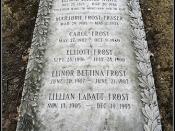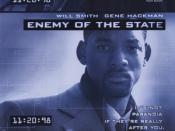A comparison of genre expectations and conventions, and their effect on the audience in sections from "Enemy of the State" and "Don't Say a Word"
These sections of film are both where the protagonist is contacted by the "Bad Guys" for the first time- in "Don't Say a Word", the section is from when Nathan is looking for his daughter until he leaves the flat. In "enemy of the State" the section runs from Robert's house being burgled until just after his locker items are switched.
The sections play on a common thriller convention of the protagonist being a very ordinary person, unwittingly made part of an evil world, emphasized in both cases by setting the protagonist with his family. This helps us identify with them, imagining ourselves in their position and encouraging sympathy
The surveillance theme is another thriller convention used; it forces the protagonist to think of clever, novel ways to outwit their attackers.
Audience enjoyment is gained by trying to anticipate how they will do this.
Nathan is directly aware of the surveillance- he feels trapped in his home. This in turn makes the audience uncomfortable and aware of the control the attackers have over him. Robert is unaware of the surveillance of him; it is shown to the audience via parallel cutting- making him seem even more of an unwitting participant.
In both cases, the surveillance is used to show higher status and control of the protaganist, emphasized by the method of attack. It is usual, in thrillers, to have slickly planned, high tech attacks, to show the efficiency and coldness of the perpetrator. By cutting the door chain and bugging Roberts's clothes, we see the attacker as having the upper hand, making their eventual defeat more of a victory...



Good
this is a good essay.....i believe it covers all of the topic broadly but does it in a manner which out does the latter
4 out of 4 people found this comment useful.